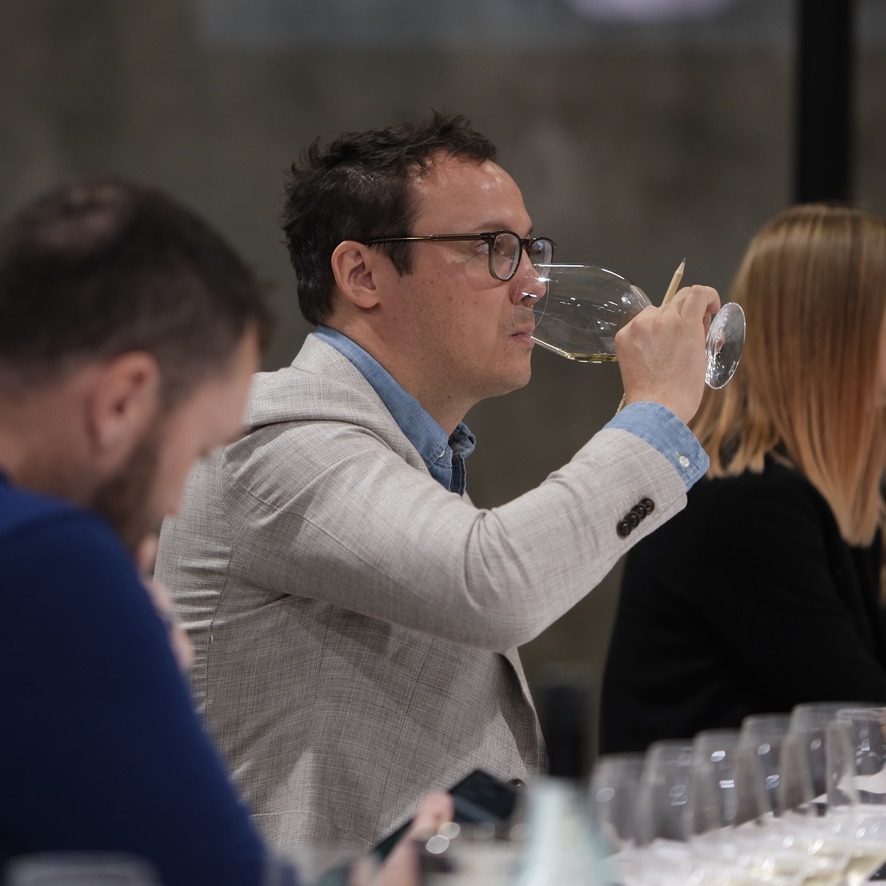Howard Park Global Sparkling Tasting
14th November 2024
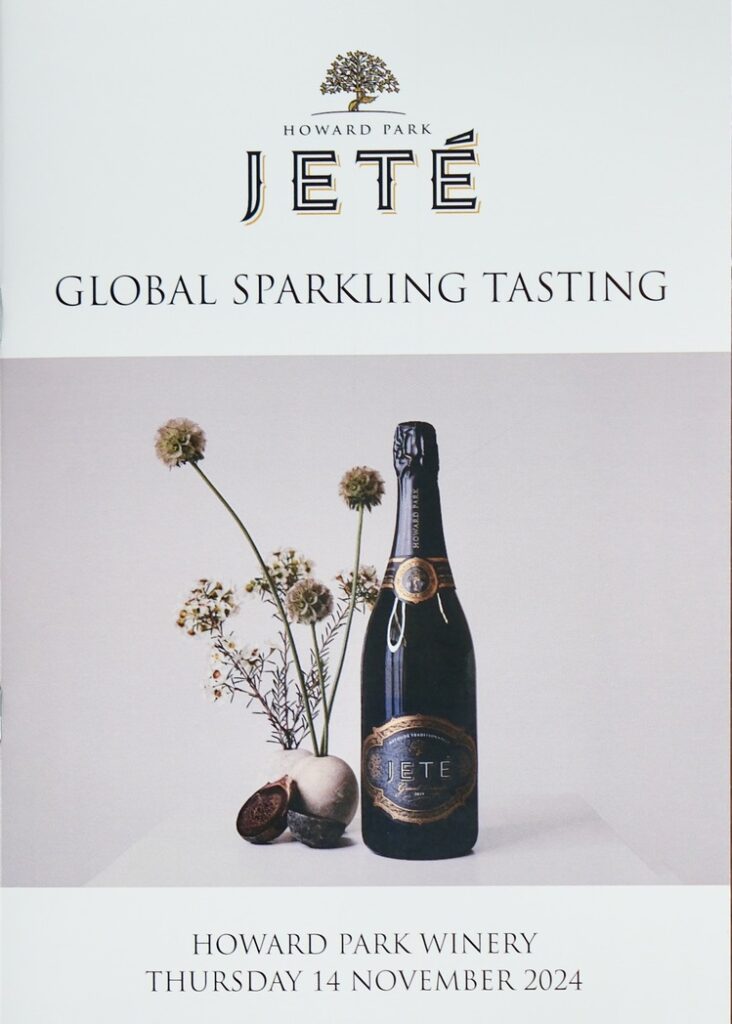
This was possibly the most thought-provoking tasting that I have ever had the privilege to attend. It was not just the diversity of styles and grape varieties that made me stop and think. It was also the way the wines were sorted into brackets to explore different factors that can influence quality and style in sparkling wines.
The winemaking team at Howard Park scoured the globe in search of extraordinary sparkling wine from both well-recognised and obscure regions. The fact that even Tyson Steltzer had not heard of some of the wines, let alone tried them, is testament to the lengths they went to.

For senior winemaker Nic Bowen and team, the aim of the tasting was to explore all facets of high quality sparkling wine, to help inform current winemaking and viticulture, as well as give a glimpse into the future as to what could be achieved by combining different varieties and climates in ways that differ from the current norms.
The wines were chosen based on international show records and, in the case of wines like the Egly, reputation.
Many of the wines tasted have never been available in Australia, and some are so exceedingly rare as to require great patience and persistence to be able to secure them.
This then led to the logistical challenges associated with getting the wines to Australia, from far-flung places.
Tasting the wines blind served to further challenge my preconceptions about where great sparkling wine should come from, and how it should taste.
Yes, there were some brilliant Champagnes, but there were also some truly remarkable examples from across the globe, including the stunning 2016 51 Degrees North from Gusbourne, which redefined for me what can be achieved with English sparkling wine, but also highlights how expensive it is to produce, given that it sells for around the same price as Krug in the UK, but is much harder to find.
Italy, Australia and Spain accounted for a number of the other wines in the tasting with notable additions from Romania (very good), Austria, Canada, USA and South Africa (not my personal favourite).
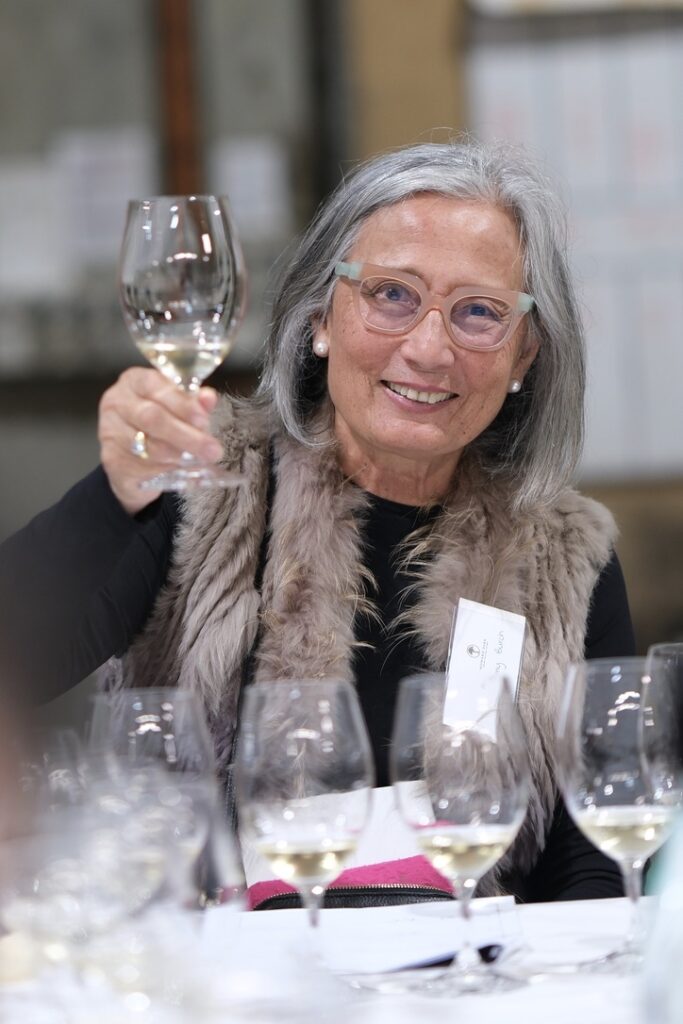
Just as extraordinary as the tasting was the generosity of the Burch family in hosting this tasting and enabling a who’s who of the Australian wine industry to attend. Their efforts, and those of the entire Howard Park team resulted in a spectacular event the likes of which has never before been hosted in Australia.
The fact that there was no self-promotion was remarkable in itself. The only Howard Park wine in the tasting was the Jeté Rosé , which recently picked up a trophy for best sparkling wine at the Wine Show of Western Australia.
It should be said that, despite being a fraction of the price of most of the wines presented, the Jeté showed brilliantly in the blind lineup.
Key takeaways for me included that
- Great sparkling wine can be made in many parts of the globe
- There are a myriad of styles that are equally meritorious
- Australia can make extraordinarily good sparkling wine
- High quality Australian sparkling wine is a bargain
Oh, and that Howard Park is well on the way to cementing its reputation as a premium sparkling wine producer.
To the tasting…
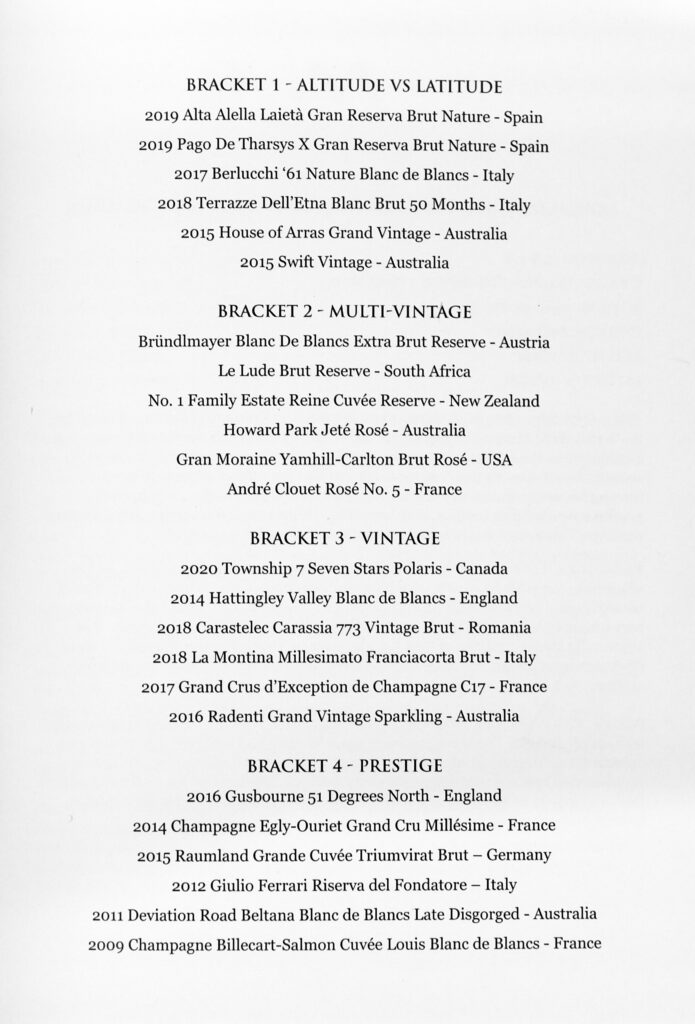
Altitude v Latitude
The first bracket of six wines was themed Altitude vs Latitude and looked to explore the differences between growing regions that achieve their cool climate by being closer to the poles (latitude) versus those that are cool by virtue of their elevation above sea level.
The wines were served as pairs, matched for country and as closely as possible, for grape, with the second wine in each pair being the one from high altitude
It is a broad generalisation, but I found the wines grown at altitude to be a little more generous and rounded, whereas those grown closer to the poles were tighter and more restrained.
But generalisations are difficult give that the first three wines were zero dosage, which tends to lend a degree of starkness to styles.
Alta Alella – Lait Grand Reserva – Brut Nature – 2019. A Cava from just outside Barcelona in Spain, made from a blend of xarel-lo, chardonnay and pinot noir. Really interesting nose showing nougat and hints of apple blossom. This is dry, very dry, but not austere. Subtle nougat, toast and brioche. Great length of flavours on a near seamless palate, with textures building in the mouth. 93pts.
Pago De Tharsys – X Grand Reserva – Brut Nature – 2019. From Requena, 70km from Valencia, the vineyards are at an altitude of 800m. More peach-like fruit here. Apricot even. Palate bursts with juicy goodness. Textured, yes, but this is more generous in its fruit structure, and easier to drink as a result. 92 pts.
Berlucchi – ’61 Nature – Blanc de Blanc – 2017. 100% chardonnay from Franciacorta in the north of Italy. More familiar in its structure and profile. Again, this is not an overt wine, as everything has been pared back, with a focus on elegance. Dry, but not overly so, despite being zero dosage. Good complexity, and excellent acidity. 93pts.
Terrazze Dell’Etna – Blanc – Brut 50 Months. 100% chardonnay from Etna in Sicily, the vineyards range from 800m to 950m in elevation. I like this a lot, as it is packed full of flavours, but remains taut and refined. Excellent length and persistence. Fruit builds, complemented by a refined structure and elegant finish. So easy to drink. Mid-palate weight. Lovely fruit. Gentle astringency on the finish. Toast builds. 94 pts.
Arras – Grand Vintage – 2015. From regions across Tasmania. 7 years on lees, dosage of 2.6g/l, chardonnay (67%) dominant blend. A different expression here, with the winemaking notes turned up a notch (brioche, lees) and bucket-loads of minerality, yet there are very attractive floral fruit notes running across the nose and palate. And it is on the palate where this shines, the layers of fruit and toast cascading across the tongue, with great length and persistence of flavours. The structure/mouthfeel are a highlight. 95-96 pts.
Printhie – Swift – Vintage 2015. From Orange in NSW, the vineyards sitting at 980 metres elevation. 7 years on lees, 5.25g/l, chardonnay (67%) pinot noir blend. Initially, this seemed more straightforward, but on tasting the wine, there was a wow moment as the fruit and lees characters exploded across the palate. Amazing. This feels as if it has had extended lees aging, given the lovely toasty notes. A superb wine with excellent complexity. 95+ pts.
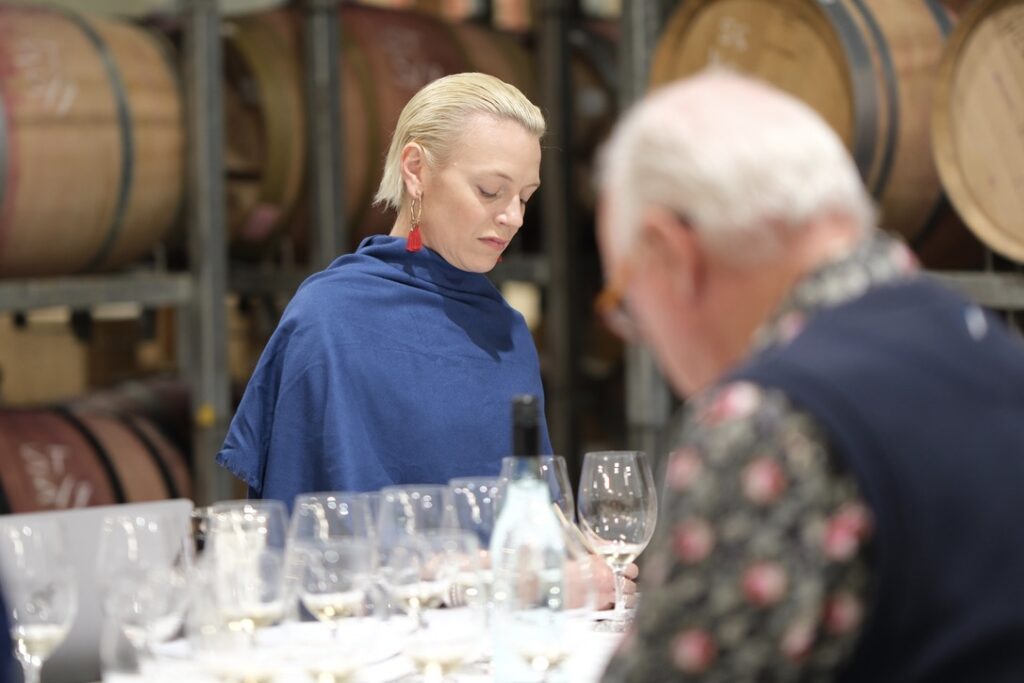
Bracket 2: Multi vintage, pinot/chardonnay
This bracket started with a wine that was100% chardonnay and finished with one that was 100% pinot noir.
Brundlmayer – Blanc de Blancs – Extra Brut Reserve – NV. From Langenlois, on the Danube north west of Vienna. Oak aged, 3 years on lees, 100% chardonnay. The balance of freshness and autolytic complexity is very attractive. The acidity is a highlight. Only small amount of reserve wines (if any), given the freshness. 93 pts
Le Lude – Brut Reserve – NV – From the Franschoek Valley in Paarl, 3 years on lees, 8.5g/l dosage, chardonnay (69%) dominant blend. Feels more mainstream and familiar, which is no bad thing. Higher dosage, gentle autolytic characters. But this bottle lacked the depth and complexity of the best. 91 pts
No1 Family Estate – Reine Cuvee Reserve – NV. Produced by Daniel Le Brun in Marlborough. 4 years on lees, 2.8g/l dosage, chardonnay 50%, pinot noir 43% pinot meunier 7%. There is a bit more wow here, as this is impactful right from the get-go. There is a degree of richness to the fruit, but this is balanced by fine, texturing acidity. The dosage is well matched. Gentle complexity suggests a reasonable amount of reserve wine, or extended lees aging. 94 pts.
Howard Park – Jeté Rosé – NV. Base wine from 2021 vintage, 31 months on lees, extra brut, 87% pinot noir. Pretty salmon-tinged hue. This is very drying. Taut, yet not austere or hard. Very much in the aperitif style. Red fruits build as the wine warms. The low dosage is apparent. Excellent length. Will really benefit from a year or two in the cellar.
Gran Moraine – Yamhill-Carlton – Brut Rose – NV. From the Willamette Valley in Oregon USA. 24 months on lees, pinot noir 53%, partial barrel ferment. Colour stained with the barest hint of pink/copper. This is an excellent wine. There is complexity and depth to burn, matched by vibrant acidity and texturing minerality. Excellent length. The balance here is a highlight, possessing richness and elegance in equal measures. Length! Continues to evolve on the palate for an age. 95pts.
Andre Clouet – Rose No. 5 – NV. 100% Pinot noir grown in Bouzy and Ambonnay in Champagne, 3 years on lees, 5.6g/l dosage, 100% pinot noir. Coppery/salmon colour. Another lovely wine, where the richness and texture are a highlight. Depth, power, balance, intensity, length. Then the acidity cuts through, conferring great freshness and life. This is very good indeed. 95+pts.6
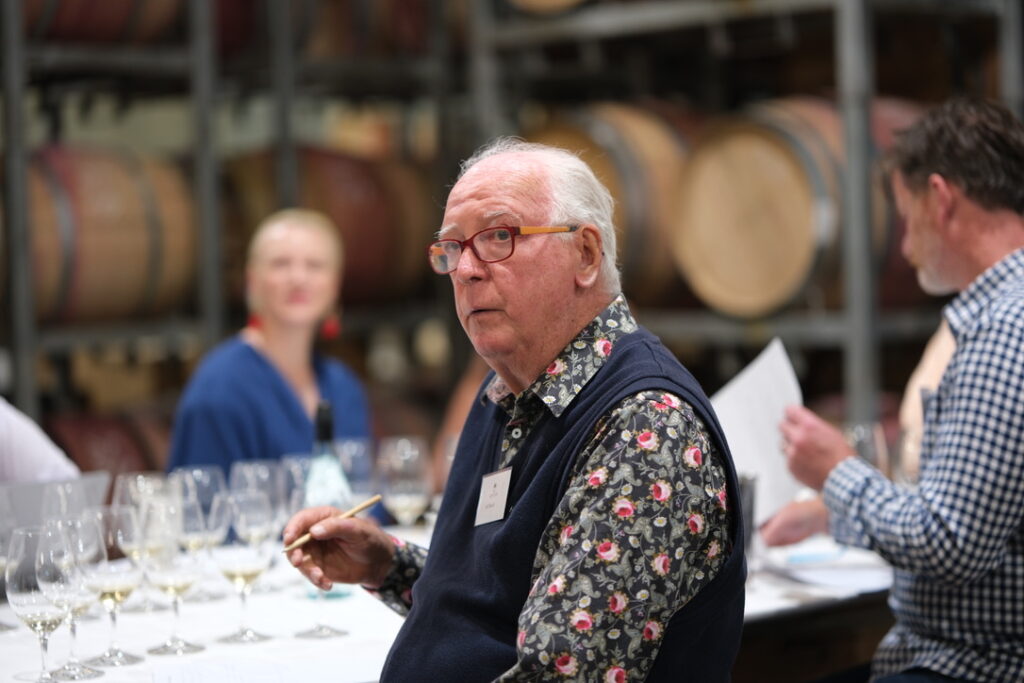
Bracket Three: Vintage
Township 7 – Seven Stars Polaris – 2020. 100% chardonnay from vineyards in Canada’s Okanagan and Fraser valleys. Minimum 18 months on lees, 9g/l dosage. Wow. Great presence on the palate. This is taut, drying and very fine. The dosage is totally balanced by the acidity. Very long, the aforementioned acidity makes this somewhat linear now, but this will flesh out with time. A very impressive wine. Hints of Granny Smith apple linger. 95pts.
Hattingley Valley – Blanc de Blancs – 2014. 100% chardonnay form a variety of vineyards across England. 5 years on lees, 6g/l dosage. More savoury than the Township 7, with complexity coming from the autolytic characters as well as the extra bottle age (disgorged in 2020). The length and persistence of flavours are noteworthy. Good intensity and power. Creamy texture. A good wine with hints of bruised apple on the finish. 94pts.
Carastelec – Carassia 733 – Vintage Brut – 2018. Chardonnay dominant blend, 3 years on lees, 11g/l dosage. From Romania, which has a fascinating wine history dating back to 1770. Very pretty floral fruit characters. A different style, with a unique flavour profile that includes hints of musk and sherbet. Lacks the ultimate depth and length of the best here, but a delicious wine that will make a great aperitif, given its poise and restraint. 94pts.
La Montina – Millesimato – Franciacorta Brut – 2018. Chardonnay dominant blend, 4 yrs on lees, 6g/l dosage, partial oak aging. From Lombardy in Italy. This wine did not look great in my glass.
Grand Crus D’Exception De Champagne C17 – 2017. A consortium of 15 growers who contribute fruit from all 17 Grand Cru regions in Champagne. 50 months on lees, 2 g/l dosage, 65% pinot noir. This appears to have extended on-cork aging, but it is, perhaps, the high-impact winemaking style that defines this wine. Whilst the colour is still straw, the nose and palate have lots of toasty brioche notes. Apple, in fact, apple juice, with a bruised tinge. Drying textured, not overly generous, but a very impressive wine. Power. Complexity. High-impact style, with preserved fruit. Polarising.
Freycinet – Radenti Grand Vintage – 2016. From Bicheno on Tasmania’s east coast. 5 – 6 years on lees, 8 g/l dosage, 60% chardonnay. There is a wow factor here, even though the aromas and flavours are not familiar to me. Power, intensity, depth, texture, this has it all. The mouth-coating texture and near seamless palate transition are a revelation. Lingers for some time, with the fruit ebbing and flowing across the palate. Superb wine. 96pts. At $75, this is a steal direct from the winery.
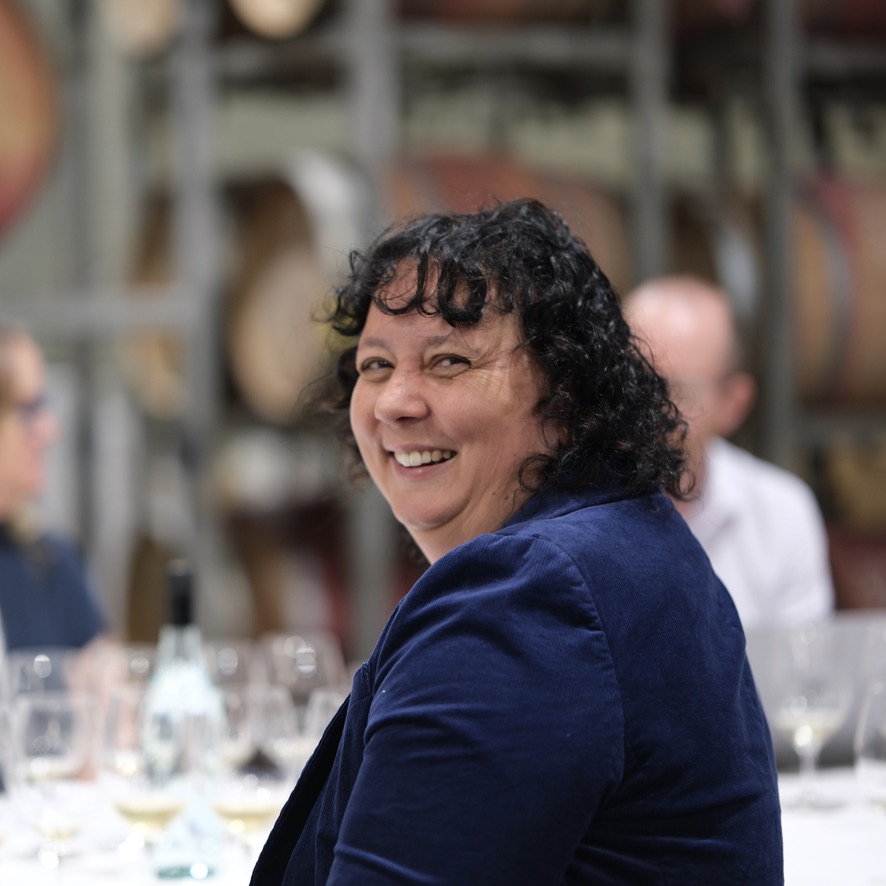
Prestige.
Gusbourne – 51 Degrees North – 2016. Produced from vineyards in Kent and West Sussex in England. 5 yrs on lees, 10 g/l dosage, 67% chardonnay. What a wine. Fine, intense and powerful, yet elegant and very refined. Seamless. Tremendous length and persistence. Magical. The texture and mouthfeel are a standout. A stunning wine with great energy, drive and superbly judged residual. 98pts. Est $500.
Egly-Ouriet – Grand Cru Millésime – 2014. Pinot dominant blend from the Montage de Reims in Champagne. 8 years on lees, 1 g/l dosage, 70% pinot noir. Here, the autolytic characters have been turned up to 11. Impressive acidity, power, depth, but lacks the elegance and refinement of the Gusbourne. Impressive, but not a style I want to drink. As it warms up, gets even better, but it is just too much for me. 95pts. $1050. (This is the beauty of blind tastings. If I had known it was Egly, then I am sure I would have found the style more to my liking 😊.)
Raumland – Grand Cuvee Triumvirat Brut – 2015. Fruit comes from Gernany’s Rheinhessen and Pfalz, over 8 yrs on lees, 7g/l dosage. 50% chardonnay, 35% pinot noir, 15% pinot meunier. This straddles the boundary between the last two. There is overt power, but everything is a little more restrained by comparison. Good drinking, hopefully with some grilled chicken. 93 pts.
Ferrari – Reserva Del Fondatore – 2012. 100% chardonnay, an incredible 10 yrs on lees, extra brut. This is different, in a very good way. Toasted cashew nuts, chestnut and even a hint of sesame. Depth and power to burn, this is a hugely impactful wine. A powerful wine with great power that would handle any food thrown at it and will be all the better for it. Superb. 96pts.
Deviation Road – Beltana Late Disgorged – 2011. Produced by Kate Laurie in the Adelaide Hills, this wine had an incredible 12 years on lees prior to disgorgement. 100% chardonnay, 7 g/l dosage. Wonderful wine that is redolent of crunchy Granny Smith apples that run the length of the palate and provides the acid backbone that keeps this alive and fresh. Intense, subtle power. Great length of flavours. No food is required. A wonderful wine on the world stage. 96 pts. A bargain at $145 from the cellar door.
Billecart Salmon – Cuvee Louis – Blanc de Blanc – 2009. 12 years on lees, 3/75g/l dosage, 100% chardonnay. Spectacular! The acidity keeps this so, so fresh. Vibrant. But it needs a few years to settle down and relax into its frame. 97 pts? You bet.
